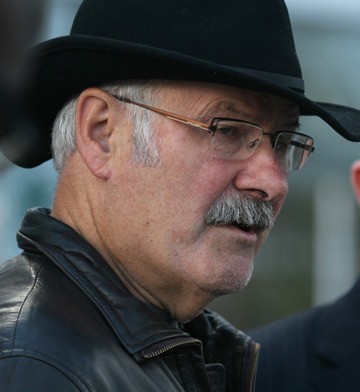VICTORIA – A few weeks before the landmark decision declaring aboriginal title proven by the Tsilhqot’in Nation, I picked up a used university textbook that looked like a handy reference.
Geography in British Columbia: People and Landscapes in Transition, by Brett McGillivray (UBC Press, Second Edition) is a good reference, except where it strays from geography into politics.
This 2005 edition came out not long before the B.C. Treaty Commission started producing agreements, notably with the Tsawwassen First Nation. It recounts the establishment of the Ministry of Native Affairs by the Bill Vander Zalm government in 1990, and the election the next year of Mike Harcourt’s NDP, who reversed the province’s historical legal position and tried to accept the existence of aboriginal title.
At this point the textbook departs from the facts and leads its freshman pupils into left-wing dogma.
McGillivray writes: “When the Liberal Party won the 2001 election (with all but two seats), it launched a province-wide referendum on treaty negotiations, prompting commentators to suggest the government was ‘trying to impose 19th century ideas on a 21st century problem’.”
“Commentators” in the above quote is of course only one commentator, veteran lefty Vancouver columnist Stephen Hume.
This quote was indeed representative of the media consensus at the time. On TV, aboriginal leaders burned their ballots while denouncing the referendum as racist and divisive. The public, and later university students, were taught that Gordon Campbell’s government was exploiting racism for political gain.
In fact, this referendum was one of a long series of efforts to untangle the legal knot left by Canada and B.C.’s failure to complete historical treaties after 1900.
Seven of the eight questions in the 2002 referendum were simply to confirm the existing position of B.C. treaty negotiators. The purpose, then as now, was to settle treaties.
The first question asked if private land should be exempt from expropriation for treaty settlements. Private property rights are not so much a 19th century idea as a 17th century one, defined in 1690 by John Locke.
What remains true today is that no society has made significant social and environmental progress without individual property rights. See the woeful state of most of Canada’s communally owned aboriginal reserves, where individually owned property isn’t permitted.
When their appeal reached the highest court, the Tsilhqot’in dropped claims of private property held by non-aboriginal residents in the region. This was a wise move considering that pushing people from their homes would lead to violent confrontations.
Other referendum questions related to preserving public access to Crown land for hunting, fishing and park use. All were endorsed.
The only new question asked if aboriginal self-government “should have the characteristics of local government, with powers delegated from Canada and British Columbia.”
Arguably, that’s what has emerged from the Tsilhqot’in case, which upholds provincial jurisdiction over public forest policy on environmental and fire protection on aboriginal title lands.
By 2009, frustrated with a lack of progress, due to Ottawa’s inaction as well as inconsistent leadership from aboriginal communities, the Campbell government tried to cut the knot. Its proposed Recognition Act would have accepted a form of aboriginal title across the province, based on 30 historical “indigenous nations.”
That idea originated not with the province but with the First Nations Leadership Council. It was rejected by a broader group of aboriginal leaders later that year.
The best way forward, also endorsed in the 2002 referendum, is sharing land use planning. B.C. has also begun sharing resource revenues.
The most likely path, however, is back to court for years to come.
Tom Fletcher is legislature reporter and columnist for Black Press. Twitter: @tomfletcherbc
